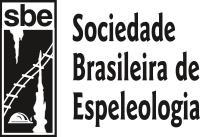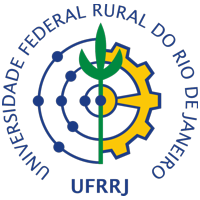Histological, morphometric and stereologic study of the endocrine pancreas in bats with different feeding habits
Este trabalho visou estudar o pâncreas endócrino de morcegos com diferentes hábitos alimentares (hematófago D. ecaudata, nectarívoro A. geoffroyi e insetívoro P. personatus), através de análise histológica, morfométrica e estereológica. Foram utilizados ao todo seis animais de cada grupo, coletados na caverna casa de Pedra (Sergipe). O pâncreas foi processado através das técnicas histológicas de rotina para inclusão em parafina. Histologicamente, foram identificado os componentes exócrinos (ácinos secretores e seus ductos associados) e endócrinos (ilhotas pancreáticas) do pâncreas. Foram observadas células imunoreativas (IR) à insulina, glucagon e somatostatina espalhadas isoladamente no pâncreas exócrino e, na região de tecido conjuntivo próximo aos ductos pancreáticos, foram identificadas células IR à insulina, glucagon e somatostatina. Células com a presença de processos citoplasmáticos foram visualizadas nas ilhotas. A massa de tecido pancreático total sobre a massa corporal não ultrapassa a relação de 0,6%, sendo esta relação maior nos morcegos insetívoros (0,6%) e menor nos morcegos nectarívoros (0,3%). O diâmetro das ilhotas variou entre as espécies sendo de 88,16 μm no morcego nectarívoro, de 56,94 μm no morcego hematófago e de 40,47 μm no morcego insetívoro. A análise estereológica mostrou uma densidade de volume (Vv) do pâncreas endócrino de 3,4% no morcego insetívoro, 6,1% no morcego nectarívoro e de 4,1% no morcego hematófago. A massa das ilhotas foi de 0,15 no morcego insetívoro, 0,24 no morcego nectarívoro e 0,48 no morcego hematófago. A densidade de volume das células α foi de (25,8%, 14,7, 16,2%), células β (35,5%, 8,7%, 54,8%) e células δ (3,9%, 6,2%, 14,3%) nos morcegos P. personatus, A. geoffroyi e D. ecaudata, respectivamente. As diferenças observadas entre espécies nos diversos parâmetros analisados podem refletir diferenças inter-específicas, assim como adaptações morfológicas das espécies ao seus hábitos alimentares
The aim of this work was study endocrine pancreas of bats with different feeding habits (hemataphagous D. ecaudata, nectarivorous A. Geoffroyi and insetivorous P. personatus) by histological, morphometric and stereological methods. Six animals was used in each group and they were collected in the caverna casa de Pedra (Sergipe). The pancreas was processed through routine histological techniques for paraffin embedding. Histologically, components of the exocrine pancreas (acini and their secretory ducts associated) and endocrine pancreas (pancreatic islet) were identified. Immunoreactive cells (IR) to insulin, glucagon and somatostatin were found isolated scattered in the exocrine pancreas and, in the tissue near the pancreatic ducts. It was also identified IR cells to insulin, glucagon and somatostatin. In the pancreatic islets, it was to indentifided cells with cytoplasmic processes. The total mass of pancreatic tissue in body weight does not exceed 0.6% and this relationship was higher in the insectivorous bats (0.6%) and lowest in nectarivorous bats (0.3%). The pancreatic islets diameter varied between species, being 88.16 μm in the nectararivorous bat, in the vampire bat at 56.94 μm and 40.47 μm in the insectivorous bat. The stereological analysis showed a volume density (Vv) of the endocrine pancreas of 3.4% in the insectivorous bat, 6.1% in the nectarivorous bat and 4.1%. in the vampire bat. The islet mass was 0.15 in the insectivorous bat, 0.24 in the nectarivorous bat and 0.48 in the vampire bat. The volume density of α cells was (25.8%, 14.7, 16.2%), β cells (35.5%, 8.7%, 54.8%) and δ cells (3.9 %, 6.2%, 14.3%) in the P. personatus, A. geoffroyi and D. ecaudata bats, respectively. The differences observed between species in the various parameters analyzed may reflect inter-specific differences, as well as morphological adaptations of species to their eating habits.

